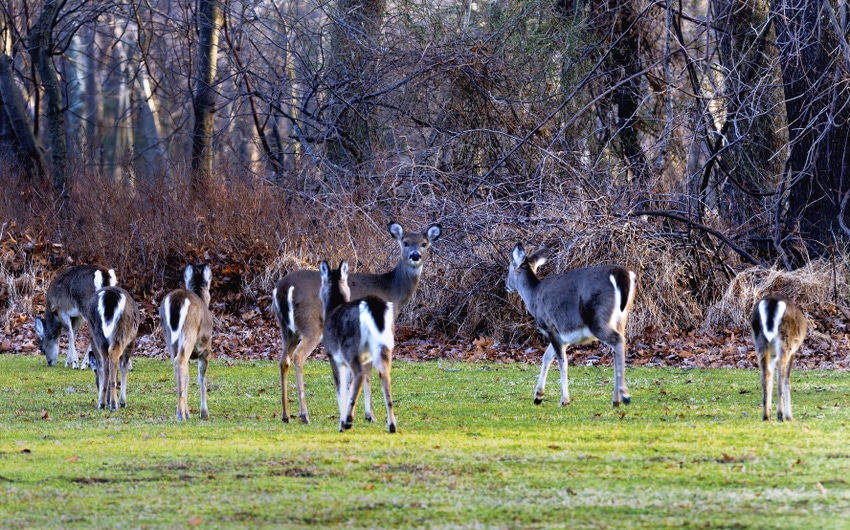New approach may detect CWD earlier, at less cost
Weighted sampling method may help answer disease ecology questions in the future.
June 20, 2018

A new statistical approach to disease surveillance may improve scientists’ and managers’ ability to detect chronic wasting disease (CWD) earlier in white-tailed deer by targeting higher-risk animals, according to an announcement from the U.S. Geographical Survey (USGS).
This approach can also provide financial and personnel savings for agencies that are required to monitor for wildlife diseases, including the National Park Service (NPS), USGS said.
CWD is a major health concern for wild deer populations, and it is present in more than 20 states. Early detection of CWD gives wildlife managers more options to minimize establishment of the disease and to limit its geographic spread.
Many land managers have relied on random sampling to detect CWD, which makes it difficult to achieve sufficient sample sizes needed to detect the disease if it is present, USGS said. That’s why a group of researchers developed and tested a new statistical model to increase sampling efficiency, making CWD early detection more feasible and less expensive.
Their paper, “Application of a Bayesian Weighted Surveillance Approach for Detecting Chronic Wasting Disease in White-tailed Deer,” was published June 18 in the Journal of Applied Ecology.
“This has been a fantastic opportunity for collaboration,” said Dr. Jenny Powers, acting chief of the NPS Wildlife Conservation Branch and co-author of the paper. “Parks provide the perfect natural laboratory, and our partners bring expertise that makes this modeling approach a benefit to all land managers.”
NPS and USGS collaborated with researchers from the Minnesota Department of Natural Resources, Princeton University and the Wisconsin Department of Natural Resources on this innovative weighted sampling scheme, the announcement said. For this study, the scientists used previously collected data from deer in Wisconsin to develop precise but adaptable sampling protocols to guide tissue collection from deer in Shenandoah National Park in Virginia, where CWD is not known to occur.
“With this new approach, researchers can test fewer numbers of deer by using existing information on the disease risk of different demographic groups,” said USGS scientist Daniel Walsh, a co-author of the study. “They can target tissue collections from the groups at highest risk instead of casting a much larger and wider net.”
Managers and scientists will be able to apply this method of weighted sampling to other areas with high risk of CWD introduction and may be able to use similar modeling techniques to answer disease ecology questions in the future.
CWD is fatal to infected animals. The disease is not known to infect people, but hunters are advised to have the deer tested before consuming the venison.
Read the entire study here.
You May Also Like

.png?width=300&auto=webp&quality=80&disable=upscale)

